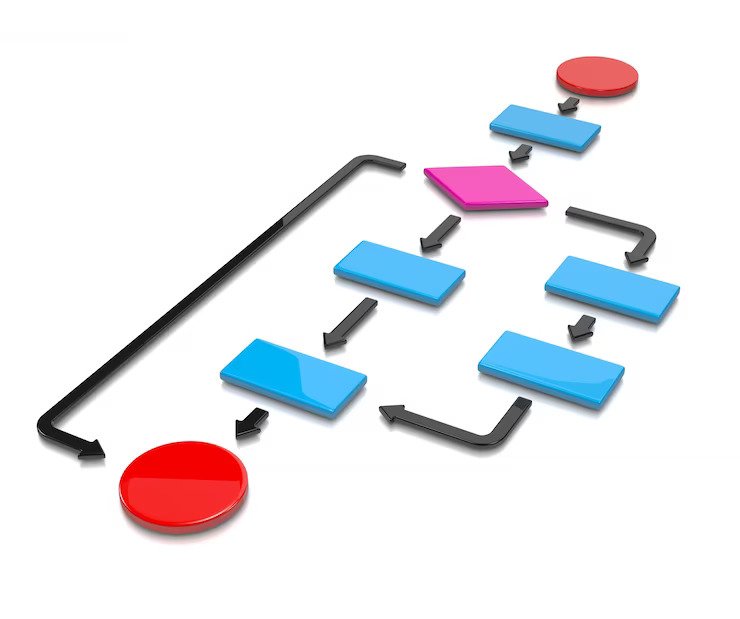How To Use Business Process Mapping To Improve Business Operations
5 Mins Read
Published on: 11 May 2023
Last Updated on: 16 May 2023

toc impalement
Business process mapping is a critical tool for businesses of all sizes looking to improve operations and efficiency.
By visually documenting the steps involved in a process, businesses can identify inefficiencies and waste, streamline workflows, and optimize their operations.
Here Are Four Prime Steps To Use Business Process Mapping To Improve Business Operations

In this article, we’ll cover how to use business process mapping to improve business operations and drive success.
Step 1: Identify the Process to Map
The first step in business process mapping is to identify the process that needs to be mapped. This could be anything from the sales process to the production process, and everything in between. The key is to choose a process that is important to the success of the business and that has room for improvement.
Step 2: Gather Information
Once you’ve identified the process to map, the next step is to gather information about it. This could involve observing the process in action, interviewing employees who are involved in the process, and reviewing any relevant documentation or data. The goal is to get a clear understanding of the process, including the inputs, outputs, and any bottlenecks or inefficiencies.
Step 3: Map the Process
With the information gathered, it’s time to start using process mapping tools to map the processes. There are many tools and techniques that can be used to map a process, but one of the most common is a flowchart. A flowchart is a visual representation of the steps involved in a process, including decision points and inputs, and outputs.
When creating a flowchart, it’s important to keep it simple and easy to understand. Use clear and concise language, and avoid using technical jargon that may be confusing to those who are not familiar with the process. It’s also helpful to involve stakeholders in the process, as they can provide valuable feedback and help ensure that the map accurately reflects the process.
Step 4: Identify Bottlenecks and Inefficiencies
Once the process has been mapped, it’s time to identify any bottlenecks or inefficiencies. These are areas where the process is slowing down or where waste is occurring. This could include unnecessary steps in the process, excessive waiting times, or inefficient use of resources.
Identifying these bottlenecks and inefficiencies is critical to improving the process. Once they have been identified, it’s important to brainstorm ways to eliminate them or reduce their impact. This could involve streamlining the process, changing the order of steps, or investing in new technology or equipment.
Step 5: Implement Improvements
With a clear understanding of the process and any bottlenecks or inefficiencies, it’s time to implement improvements. This could involve making changes to the process, training employees on new procedures, or investing in new technology or equipment.
When implementing improvements, it’s important to communicate the changes to all stakeholders and to ensure that everyone is on board with the new procedures. It’s also helpful to monitor the process after the changes have been made to ensure that they are having the desired effect. Plus, implementing new technologies like aviation tech to map your success should also be in your action plan.
Step 6: Monitor and Measure Results
The final step in business process mapping is to monitor and measure the results. This involves tracking key metrics such as cycle time, throughput, and quality to determine whether the improvements have been successful.
Monitoring and measuring results is critical to ensuring that the process continues to improve over time. It’s important to set benchmarks and goals and to regularly review progress to ensure that the process is meeting these targets.
Tips for Successful Business Process Mapping

To ensure successful business process mapping, there are several tips to keep in mind:
- Involve Stakeholders: Involve all stakeholders in the process, including employees, customers, and suppliers. This will help ensure that the map accurately reflects the process and that everyone is on board with the changes.
- Use Data: Use data to inform decisions and identify areas for improvement. This could involve collecting data on cycle time, throughput, quality, or other relevant metrics.
- Keep it Simple: Keep the process map simple and easy to understand. Use clear language and avoid technical jargon that may be confusing to those who are not familiar with the process.
- Prioritize Improvements: Prioritize improvements based on their impact on the business. Focus on areas where improvements will have the biggest impact on efficiency, quality, and customer satisfaction.
- Monitor and Measure Results: Regularly monitor and measure key metrics to determine whether improvements have been successful. Use this data to make further improvements and continue to optimize the process over time.
Why Business Process Mapping Matters
Business process mapping is a critical tool for businesses looking to improve operations and drive success. By visually documenting the steps involved in a process, businesses can identify inefficiencies and waste, streamline workflows, and optimize their operations.
There are several key benefits to business process mapping:
- Improved Efficiency: Business process mapping can help businesses identify inefficiencies and streamline workflows, leading to improved efficiency and productivity.
- Increased Quality: By identifying bottlenecks and inefficiencies, businesses can eliminate waste and improve the quality of their products or services.
- Better Customer Satisfaction: By improving efficiency and quality, businesses can better meet the needs of their customers, leading to increased customer satisfaction.
- Reduced Costs: By eliminating waste and improving efficiency, businesses can reduce costs and improve profitability.
- Increased Innovation: Business process mapping can also help businesses identify areas for innovation and new product development.
In conclusion, business process mapping is a critical tool for businesses looking to improve operations and drive success. By identifying inefficiencies and waste, streamlining workflows, and optimizing operations, businesses can improve efficiency, quality, customer satisfaction, and profitability.
By following the steps outlined in this guide and keeping these tips in mind, businesses can successfully implement business process mapping and realize these benefits.
Read Also:


















Comments Are Closed For This Article